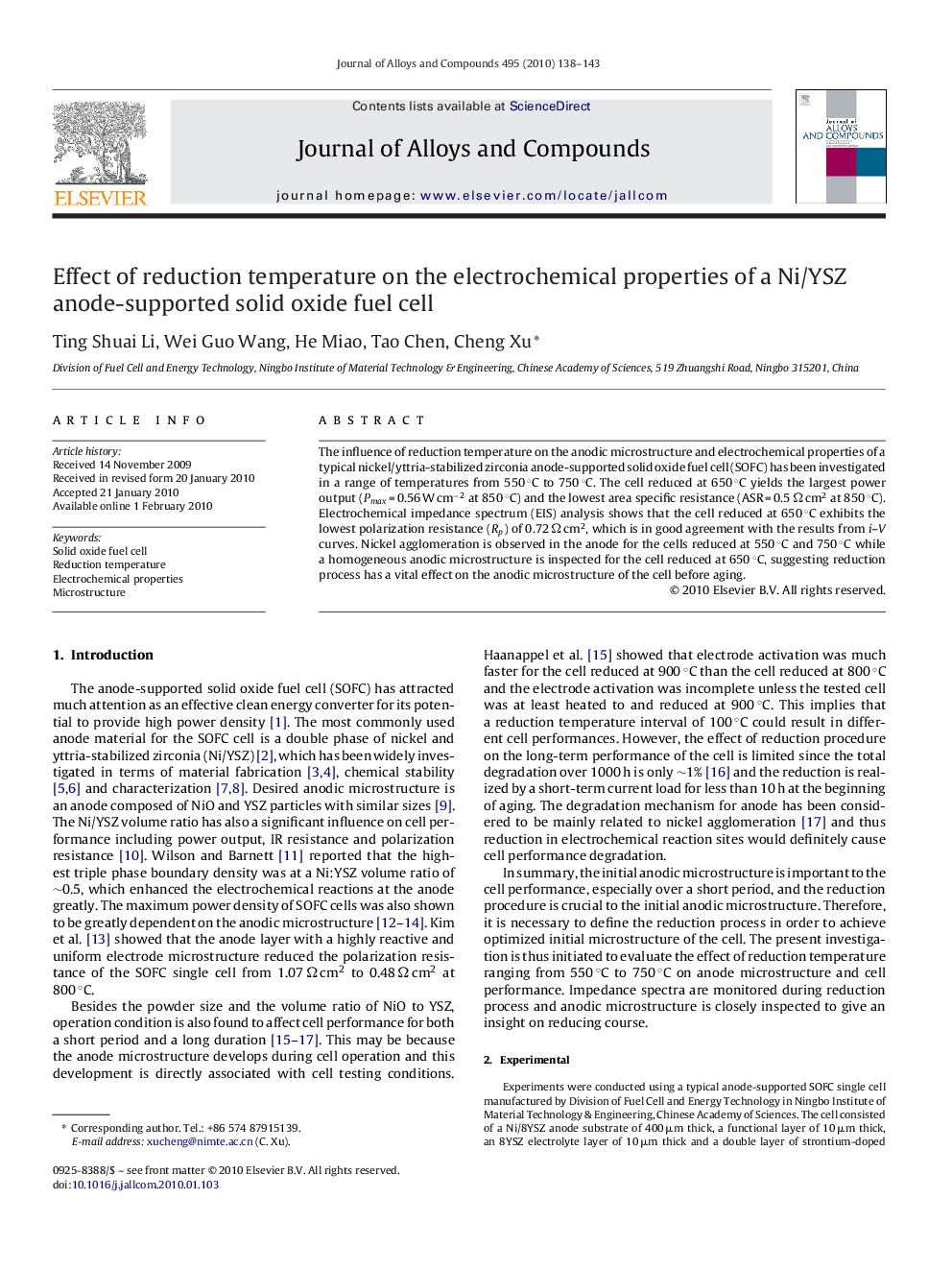| Article ID | Journal | Published Year | Pages | File Type |
|---|---|---|---|---|
| 1619338 | Journal of Alloys and Compounds | 2010 | 6 Pages |
The influence of reduction temperature on the anodic microstructure and electrochemical properties of a typical nickel/yttria-stabilized zirconia anode-supported solid oxide fuel cell (SOFC) has been investigated in a range of temperatures from 550 °C to 750 °C. The cell reduced at 650 °C yields the largest power output (Pmax = 0.56 W cm−2 at 850 °C) and the lowest area specific resistance (ASR = 0.5 Ω cm2 at 850 °C). Electrochemical impedance spectrum (EIS) analysis shows that the cell reduced at 650 °C exhibits the lowest polarization resistance (Rp) of 0.72 Ω cm2, which is in good agreement with the results from i–V curves. Nickel agglomeration is observed in the anode for the cells reduced at 550 °C and 750 °C while a homogeneous anodic microstructure is inspected for the cell reduced at 650 °C, suggesting reduction process has a vital effect on the anodic microstructure of the cell before aging.
